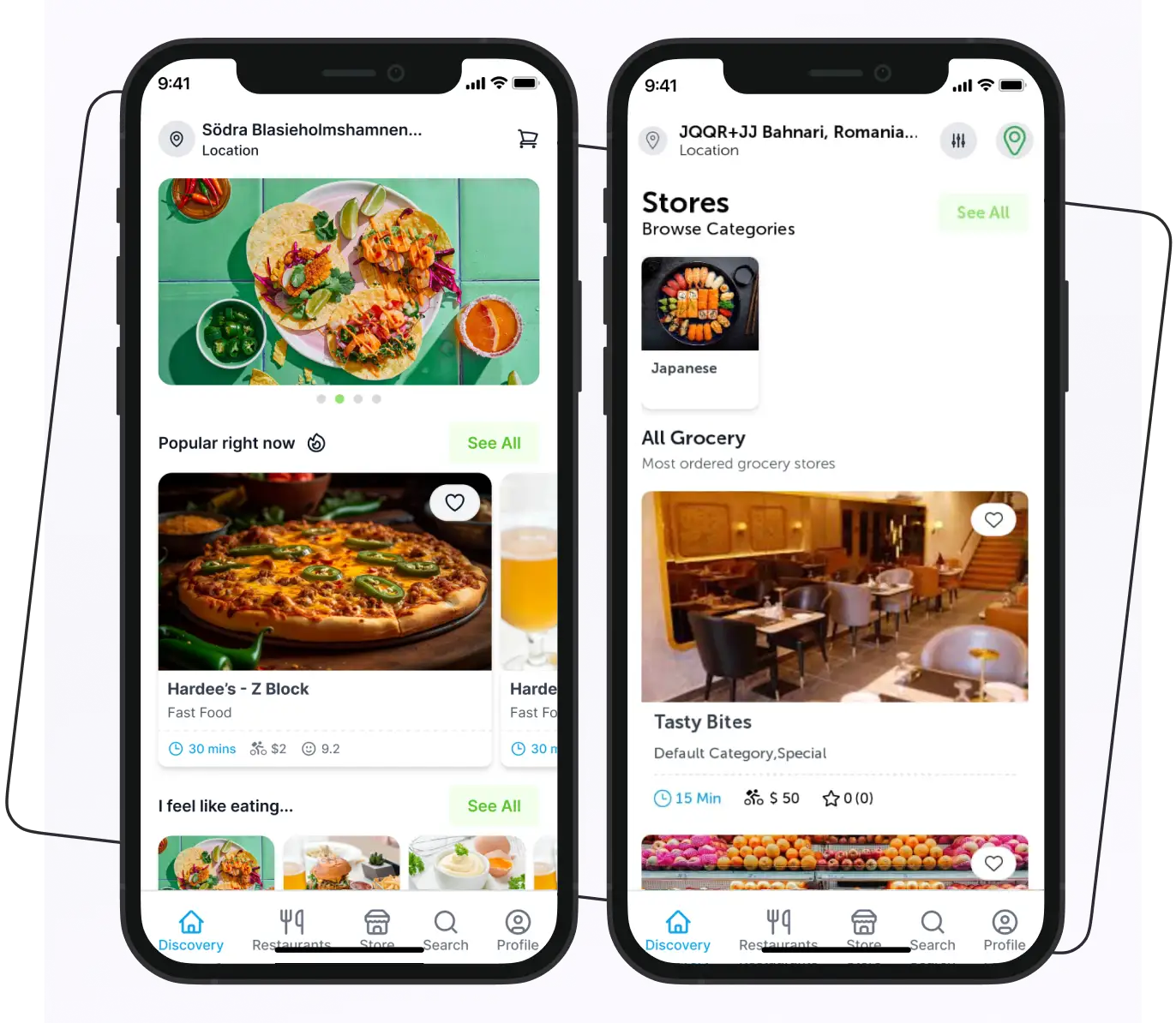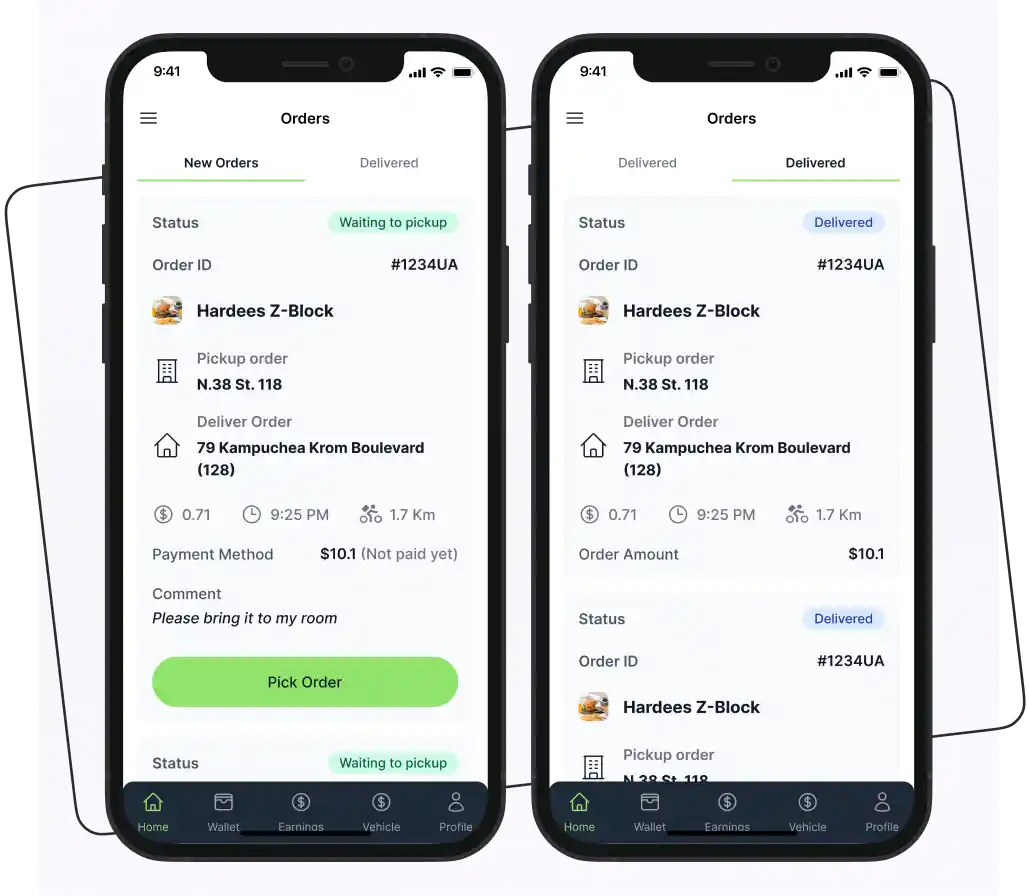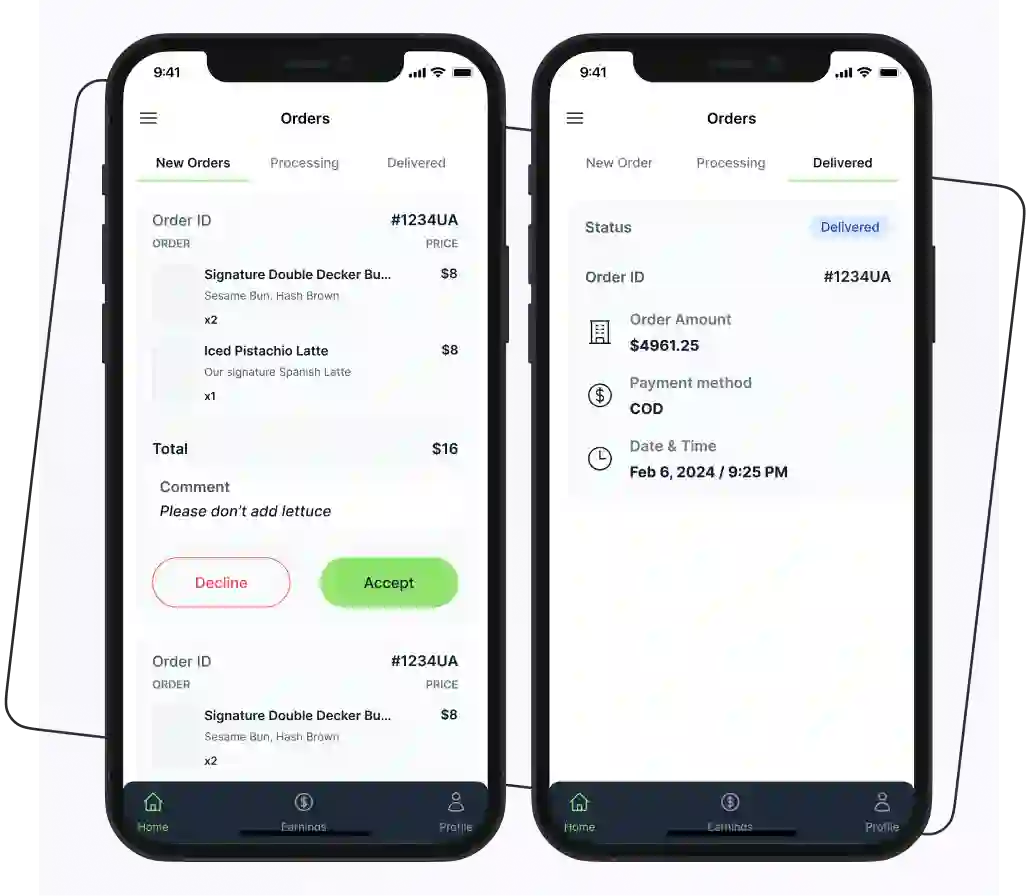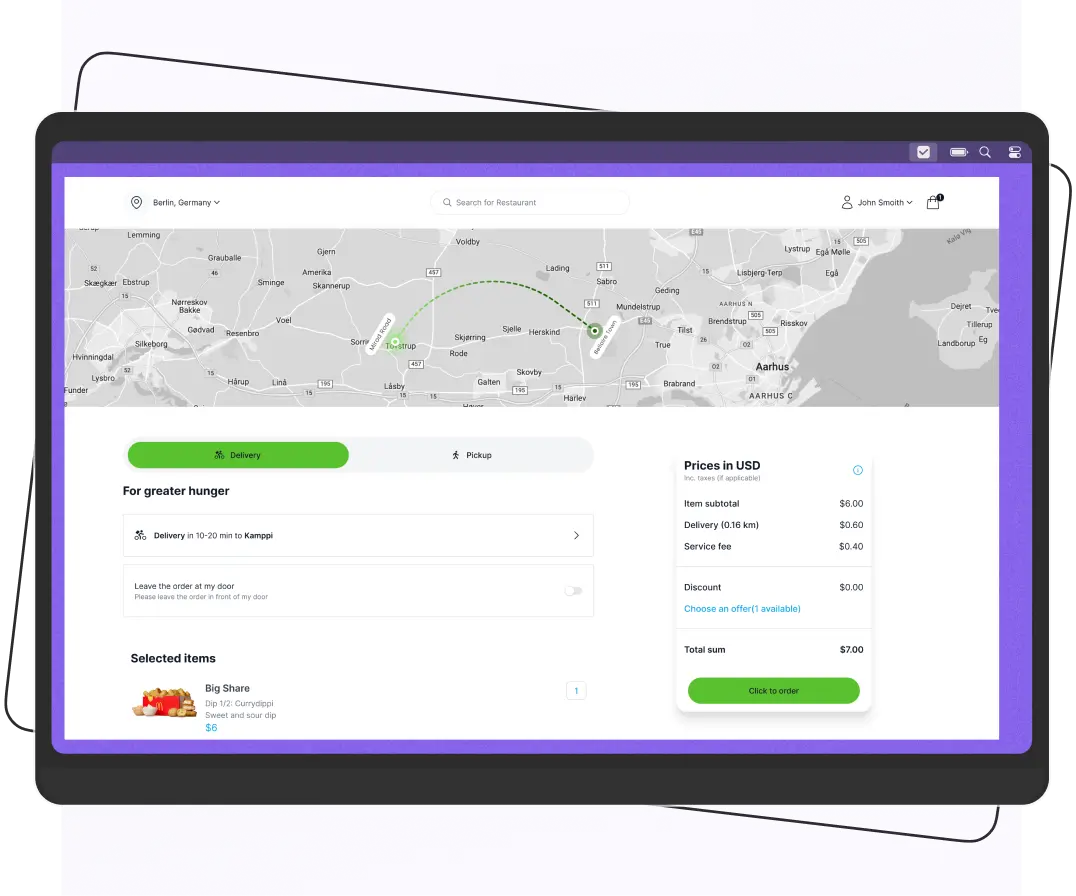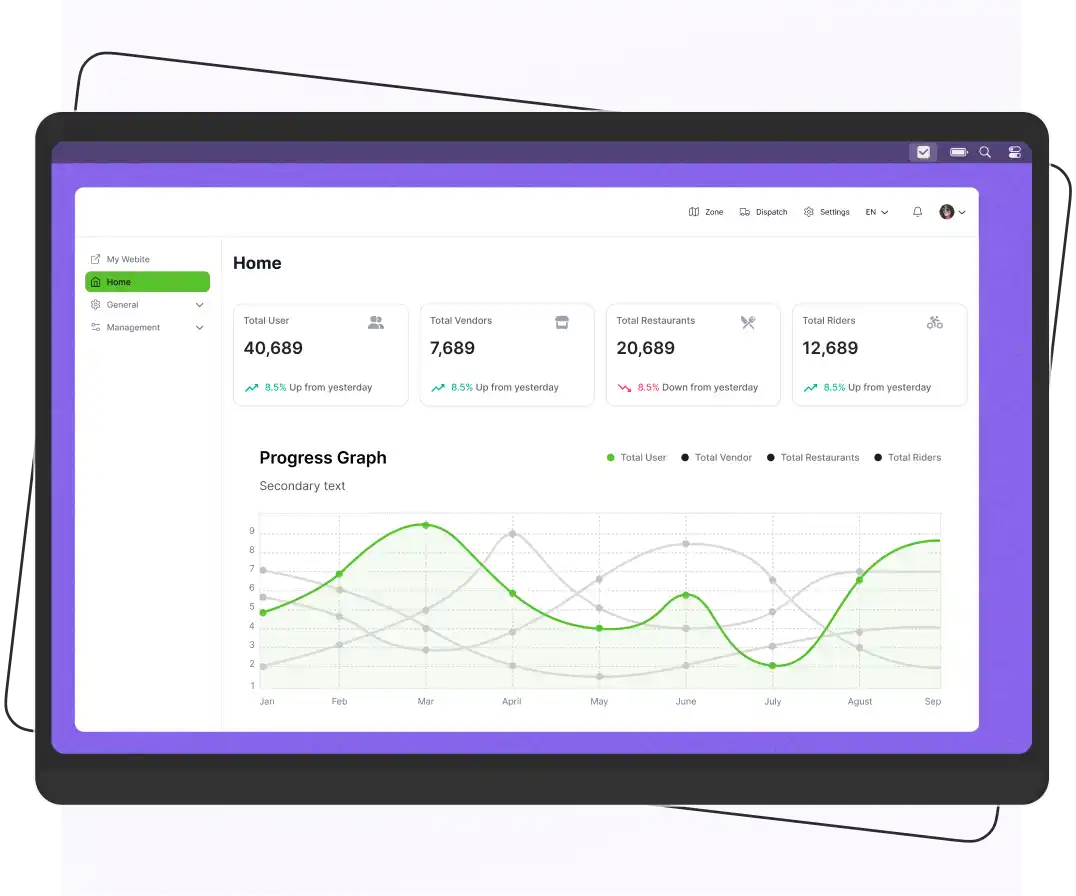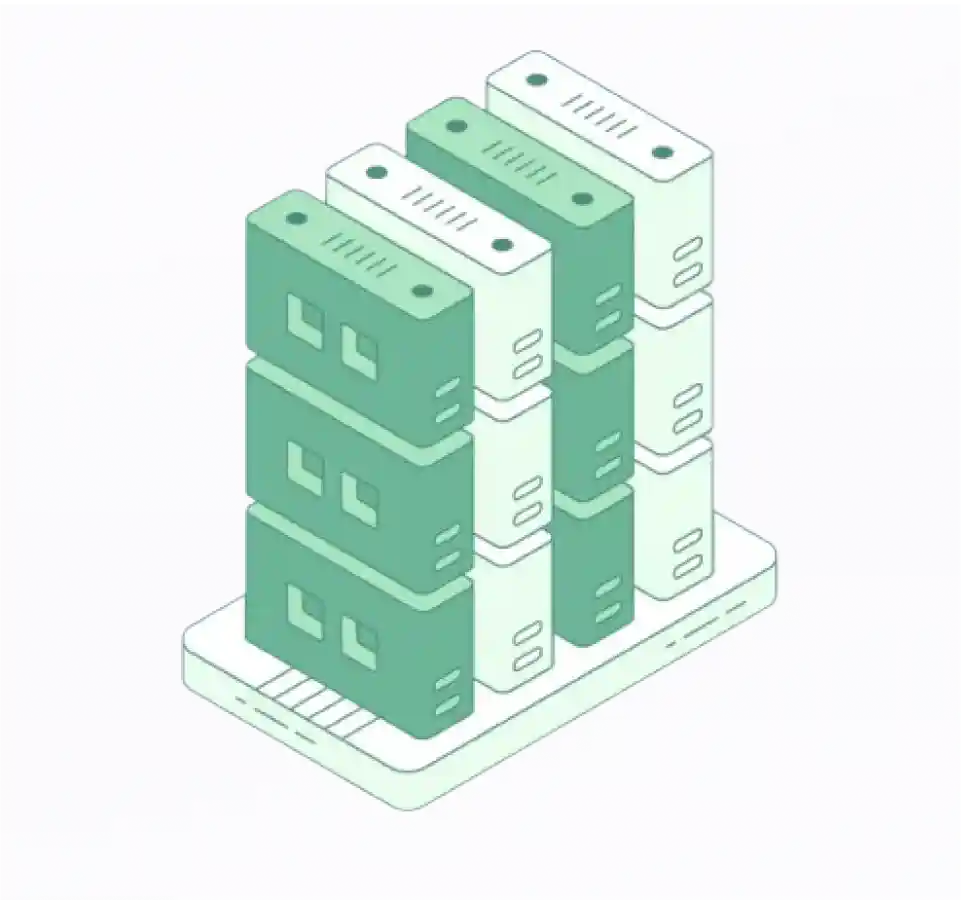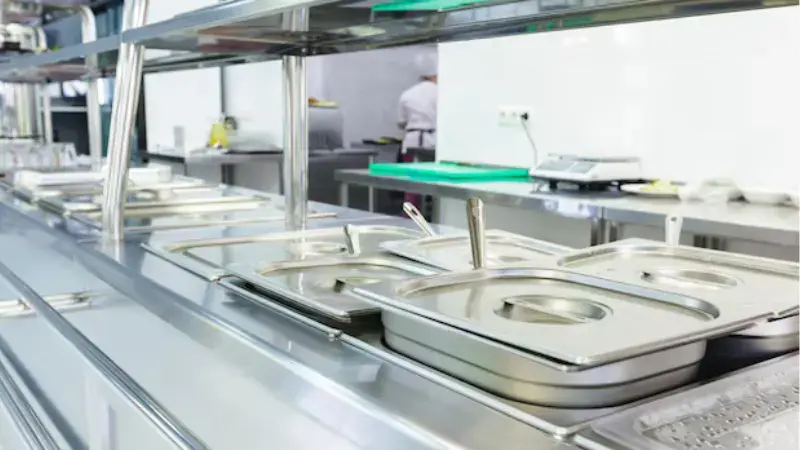
Key Takeaways
- Cloud kitchens: Low-investment restaurants that operate without dine-in space, relying on online delivery platforms.
- Growing Opportunity: The global cloud kitchen market is projected to hit $177.85 billion by 2032 (strong growth opportunity).
- Cost: Startup costs range from $16,000–$78,000, depending on location, equipment, and staff.
- Main cloud kitchen models: Include virtual restaurants, multi-brand kitchens, fully outsourced kitchens, and hybrid kitchens.
- Advantages: Lower overhead, flexible menus, faster scalability, and broader reach via delivery apps.
- Disadvantages: High competition, limited customer experience, tech dependency, and pricing pressures.
- Steps to start: Choose a business model, secure licenses, set up kitchen space, invest in technology, hire staff, and build a strong online presence.
- Top players: Rebel Foods, Kitchen United, CloudKitchens, and Ghost Kitchen Brands showcase proven models.
Want to start a restaurant without the high rent, staff, and overhead? A cloud kitchen may be your best bet in 2025.
The cloud kitchen industry is set to reach $177.85 billion by 2032.
With lower costs and high demand, starting a cloud kitchen is one of today’s best food business opportunities.
Many dream of opening a restaurant, but traditional models often come with high risks. Cloud kitchens, which surged from 15% to 51% usage during the pandemic, offer a great alternative with reduced startup costs.
However, success requires careful planning and operational knowledge. To help you grow in this business, we’ve gathered essential information on starting a cloud kitchen from home.
So, without wasting any time, start exploring it.
Supercharge your deliveries with Enatega.
Launch NowWhat is a Cloud Kitchen?
A cloud kitchen is often referred to as a ghost kitchen or virtual kitchen. It is a food service business that operates without a traditional dine-in space and can be started in a home with a little kitchen space.
The global cloud kitchen market size will reach 177.85 billion US dollars by 2032.
Cloud kitchens enable chefs and food creators to explore various cuisines and concepts without the limitations of a traditional restaurant setup.
These kitchens rely on online orders through online food ordering platforms such as UberEats, Grubhub, Zomato, or any other local delivery service.
Types of Cloud Kitchens
Here are the main types of cloud kitchens.
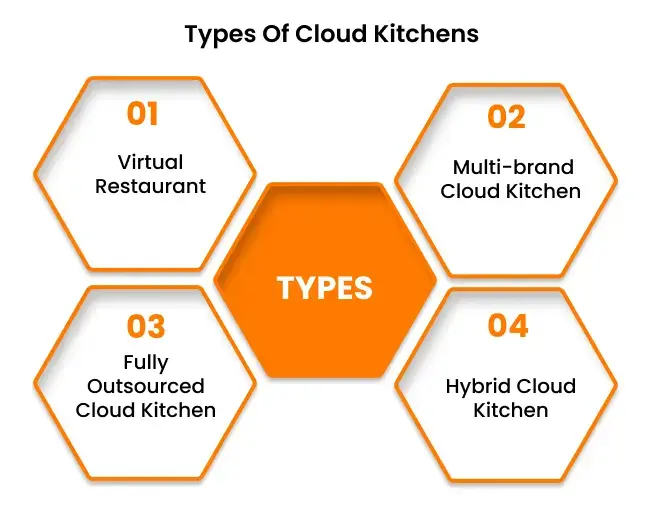
Virtual Restaurant
The virtual restaurant is the primary model of cloud kitchens. It operates without a physical storefront, relying solely on online ordering and delivery platforms to reach customers.
Multi-brand Cloud Kitchen
Multi-brand cloud kitchens consist of a large kitchen facility that hosts multiple brands. These brands share resources and equipment, allowing them to collaborate efficiently. This concept not only expands customer reach but also increases profitability by reducing operational costs.
Fully Outsourced Cloud Kitchen
In this type, food products are sourced externally. Once the ingredients arrive, the kitchen staff prepares the dishes, adding the final touches before delivery. This approach minimizes hassle and can save time and money.
Hybrid Cloud Kitchen
The hybrid cloud kitchen combines elements of both brand-owned and outsourced operations, offering flexibility and diverse menu options while maximizing resource efficiency.
Cloud Kitchens vs. Traditional Restaurants
What is the difference between a cloud kitchen and a restaurant?
The table below shows the differences between cloud kitchens and traditional restaurants.
| Features | Cloud Kitchens | Traditional Restaurants |
| Business Model | Delivery-focused, often without a storefront | Dine-in and takeout, with a physical location |
| Startup Costs | Lower initial investment | Higher costs due to location, decor, and staffing |
| Menu Flexibility | Can easily change or adapt menu items | More rigid due to established brand and customer expectations |
| Customer Interaction | Limited direct interaction | Direct interaction with customers |
| Operating Hours | Flexible, often extended hours | Fixed hours, typically lunch and dinner |
| Staffing Needs | Fewer staff required | More staff are needed for service and management |
| Location | Can be located in less expensive areas | Typically, in high-traffic locations |
| Marketing | Heavily reliant on online marketing | Combines online and physical marketing |
| Delivery Focus | Entirely delivery-oriented | Delivery is an option, but not the main focus |
| Scalability | Easily scalable across multiple locations | More complex scaling due to physical presence |
| Customer Experience | Less emphasis on ambiance | Focus on dining experience and atmosphere |
How do Cloud Kitchens Work?
Here is a step-by-step process that shows the working of a cloud kitchen.
Step 1: Concept Development
- Business Model: Entrepreneurs develop a food concept.
- Menu Design: Create a focused menu optimized for delivery, often featuring popular items that travel well.
Step 2: Location Selection
- Kitchen Space: Rent a commercial kitchen space equipped with the necessary appliances and equipment.
- Strategic Location: Choose a location that allows for efficient delivery to target areas with high demand.
Step 3: Technology Integration
- Online Presence: Set up a website and register on food delivery platforms (e.g., Uber Eats, DoorDash).
- Order Management System: Implement software to manage incoming orders, inventory, and deliveries efficiently.
Step 4: Food Preparation
- Staffing: Hire skilled kitchen staff to prepare the menu items.
- Cooking Process: Prepare food in the kitchen, adhering to quality and safety standards.
Step 5: Packaging
- Eco-Friendly Packaging: Use packaging that maintains food quality and is environmentally friendly.
- Branding: Ensure packaging is branded for recognition and marketing.
Step 6: Delivery Coordination
- Delivery Partners: Collaborate with third-party delivery services or hire in-house delivery drivers.
- Order Tracking: Use technology to track orders and provide updates to customers.
Step 7: Customer Feedback
- Gather Feedback: Encourage customers to provide feedback on their experience.
- Adjustments: Use feedback to make necessary adjustments to the menu, service, or operations.
How to Start a Cloud Kitchen from Home? Step-by-Step Guide
Cloud kitchens represent the newest trend in the on-demand food delivery industry. To successfully run a business, you should follow the steps that are mentioned below.
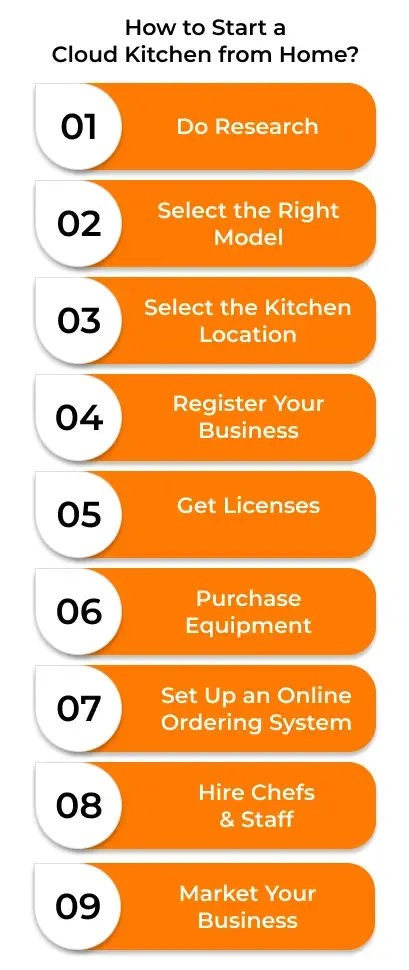
1. Do Research
Begin by researching the cloud kitchen industry. Understand the market trends, customer preferences, and competitors in your area. Look into popular cuisines and successful cloud kitchen models to help you make a better business strategy.
2. Select the Right Cloud Kitchen Business Model
Choose a cloud kitchen model that fits your goals. Options include a ghost kitchen (serving multiple brands), a delivery-only restaurant, or a hybrid model. Consider what type of food you want to offer and how you will differentiate your brand.
3. Select the Kitchen Location
If you’re starting a cloud kitchen from home, ensure your kitchen meets local health and safety regulations. If necessary, you may need to invest in a commercial kitchen space that complies with food preparation standards. Consider accessibility for delivery drivers as well.
4. Register Your Business
Choose a name for your cloud kitchen and register it with the appropriate government authorities. This step includes selecting a business structure (e.g., sole proprietorship, LLC) and obtaining an employer identification number (EIN) if needed.
5. Get Licenses
Apply for the necessary licenses and permits to operate a food business in your area. This typically includes food handler permits, health department permits, and business licenses. Compliance with local regulations is vital to avoid fines or shutdowns.
6. Purchase Equipment
Invest in the essential kitchen equipment needed to prepare your menu items. This may include fryers, ovens, refrigerators, and storage containers. Ensure that your equipment meets health and safety standards.
7. Set Up an Online Ordering System
Implement an online ordering system to facilitate customer orders. You can either create your website or use third-party platforms that specialize in food delivery. Ensure the system is user-friendly and integrates well with your payment processing.
8. Hire Chefs and Staff
Depending on the size of your operation, consider hiring additional chefs and support staff. Look for experienced people who share your vision and can help maintain quality and efficiency in food preparation and delivery.
9. Market Your Business
Create a marketing strategy to promote your cloud kitchen. Use social media, online advertising, and local promotions to attract potential customers. Consider offering discounts or special deals to attract initial orders and build a loyal customer base.
Advantages and Disadvantages of a Cloud Kitchen
Cloud Kitchen Pros and Cons: Is It the Right Business for You?
Before starting the cloud kitchen, you should know the advantages and disadvantages to help you make a better decision.
| Advantages of a Cloud Kitchen | Disadvantages of a Cloud Kitchen |
| Lower Cost: The primary advantage of cloud kitchens is cost savings. Operating a cloud kitchen reduces the expenses associated with hiring staff. You only need to worry about a cloud kitchen maintaining the quality of food, taste, and fast delivery. | High Competition: Cloud kitchens face a lot of competition because it’s easy to start one. Many new businesses can enter the market without needing a big investment, which creates a crowded space. With so many options available, it’s tough for any single kitchen to stand out. This often leads to price cuts, making it hard for even established brands to keep their customers. |
| Flexibility: Cloud kitchens offer greater flexibility compared to traditional restaurants. You can easily adjust the menu to meet customer demands and modify locations or operating hours with minimal effort. In addition, cloud kitchens provide flexibility in property cost and location. They can function in a variety of spaces, such as basements, catering kitchens, warehouses, or parking lots. This flexibility is advantageous for businesses on a tight budget that still have a loyal customer base relying on delivery services. | Limited Customer Experience: They don’t have a physical location, so customers miss out on the usual dining experience. There’s no restaurant atmosphere or friendly service, which can make it harder for customers to feel connected to the brand. Additionally, because food is delivered, its quality can suffer during transport, affecting how satisfied customers are with their meals. |
| Wider Reach: Cloud kitchens help you to reach a larger audience by using delivery platforms, allowing you to serve customers beyond a single physical location. | Dependent on Technology: Cloud kitchens rely heavily on technology for everything from taking orders to managing deliveries. This dependence means that if there are any technical problems, like issues with the ordering app, it can disrupt business and lead to lost sales. Not everyone running a cloud kitchen is tech-savvy, which can make it challenging to use these tools effectively. If the technology fails, it can hurt sales right away. |
| Opportunity to Experiment: Cloud kitchens are so much cheaper; they’re also much faster to launch. These kitchens offer the chance to test new menu items and concepts without the financial risks. For example, Melt Shop successfully used cloud kitchens to launch a new concept, Melt’s Wing Shop, which focuses exclusively on wings. This approach allowed them to explore a niche market while minimizing financial risks. | Lack of Pricing Power: Cloud kitchen owners often struggle with setting prices. Customers are very price-sensitive and like to compare options from different places, which can force kitchens to lower their prices. This price competition can cut into profits. Moreover, third-party delivery services often charge high fees, making it even harder for cloud kitchens to raise prices without losing customers. |
| Efficiency: Cloud kitchens streamline operations, allowing for optimized workflows and reduced overhead costs. It leads to improved overall efficiency in food preparation and service. | Inventory Management: Managing inventory can be more complicated for cloud kitchens, especially when multiple brands operate from the same kitchen space. Poor inventory management can lead to shortages or excess waste, impacting profitability. |
How Much Does It Cost to Start a Cloud Kitchen?
Look at the table below and understand the estimated cost to start a cloud kitchen.
| Cost Category | Estimated Cost (USD) | Description |
| Kitchen Equipment | $10,000 – $50,000 | Ovens, stoves, refrigerators, prep tables, etc. |
| Licenses & Permits | $500 – $2,000 | Health permits, food handler permits, and business licenses. |
| Rent/Lease | $1,000 – $5,000/month | Monthly rent for kitchen space (shared or dedicated). |
| Utilities | $200 – $500/month | Electricity, water, gas, and internet costs. |
| Initial Inventory | $1,000 – $5,000 | Ingredients, packaging materials, and cleaning supplies. |
| Marketing | $500 – $3,000 | Website, social media ads, and local promotions. |
| Staffing Costs | $2,000 – $10,000/month | Salaries for chefs, delivery staff, etc. |
| Technology and Software | $200 – $1,000 | POS systems, ordering platforms, and accounting software. |
| Miscellaneous | $500 – $2,000 | Insurance, unexpected expenses. |
| Total Estimated Cost: $16,400 – $78,500 (The overall range is based on various factors) | ||
What are the Challenges of Cloud Kitchens?
Below are some challenges and ways to overcome them when starting a cloud kitchen.
| Challenges | Solutions |
| Inconsistent Food Quality: Variability in taste and presentation can lead to customer dissatisfaction. | Use standardized recipes and cooking processes. Regular training sessions for kitchen staff. Implement quality control checks. |
| High Cost: Initial setup and operational costs can be substantial, impacting profitability. | Optimize ingredient sourcing to reduce costs. Use technology to better manage operations. Monitor expenses closely and adjust as needed. |
| Competition: The market is saturated with numerous cloud kitchens and food delivery options. | Focus on a niche market or unique cuisine. Invest in effective cloud kitchen marketing strategies. Build a strong brand presence on social media. |
| Limited Customer Experience: A lack of physical interaction can hinder customer relationships and feedback. | Use digital platforms for customer engagement (e.g., surveys, social media). Offer loyalty programs or incentives. Ensure timely and friendly customer service. |
| Operational Challenges: Managing orders, deliveries, and kitchen staff efficiently can be complex. | Use technology for order management and tracking. Hire experienced kitchen and delivery staff. Implement efficient workflows to reduce downtime. |
Cloud Kitchen Examples
What is the most popular cloud kitchen brand?
Here are some notable examples of cloud kitchens.
Rebel Foods
Based in India, Rebel Foods operates multiple brands, including Faasos and Behrouz Biryani, delivering a variety of cuisines through online platforms.
Kitchen United
This USA-based company provides kitchen space for various restaurant brands. It allows them to operate delivery and takeout services without investing in a full restaurant.
CloudKitchens
Founded by former Uber CEO Travis Kalanick. This company offers kitchen space and technological support for brands aiming to serve delivery customers.
Ghost Kitchen Brands
A Canadian company that partners with restaurants to create delivery-only brands. They use existing kitchen spaces to maximize efficiency.
EatStreet
This U.S.-based platform not only facilitates food delivery but also runs cloud kitchens to help local restaurants increase their delivery capabilities.
FAQs
1. What is the difference between a cloud kitchen and a dark kitchen?
The table below shows the differences between a cloud kitchen and a dark kitchen.
| Cloud Kitchen | Dark Kitchen |
| May have some branding or visibility online | Typically hidden from public view |
| Can host multiple restaurant concepts | Often dedicated to a single brand |
| Shared facilities and services are available | Standalone or shared kitchen space |
2. Who is the largest cloud kitchen company in the world?
The largest cloud kitchen company in the world is often considered to be Rebel Foods. Other notable players include Kitchen United and CloudKitchens.
3. What is the difference between a ghost kitchen and a cloud kitchen?
Here are the differences between a ghost kitchen and a cloud kitchen.
| Ghost Kitchen | Cloud Kitchen |
| The restaurant will be without a dine-in area, focusing on delivery and takeout. | Commercial kitchen space that hosts multiple restaurant brands. |
| Often owned by individual restaurants. | Usually operated by third-party companies or incubators. |
| Maintain the original restaurant brand. | Can host multiple brands under one roof, often with unique identities. |
| Higher costs due to maintaining a restaurant identity. | Lower overhead costs due to shared kitchen space. |
| Limited to the specific restaurant’s offerings. | High flexibility to quickly adapt or change brands. |
4. How much space is needed for a cloud kitchen?
A cloud kitchen requires 200 to 1,000 square feet of space, depending on the menu and order volume.
5. What is the minimum investment to start a cloud kitchen?
The minimum investment for a cloud kitchen can range from $10,000 to $50,000, depending on factors like location, equipment, and initial operating costs.
6. What is another name for a cloud kitchen?
A cloud kitchen, also known as a ghost kitchen, refers to a commercial kitchen space designed specifically for food delivery and takeout. These kitchens operate without a traditional dine-in area, allowing restaurants to focus solely on preparing food for delivery services.
7. Is a cloud kitchen profitable?
Yes, cloud kitchens can be profitable due to these reasons:
- Lower overhead costs
- Reduced need for physical dining space
- Ability to serve multiple brands from a single location
However, success depends on effective marketing, food quality, and efficient operations.
8. Can anyone start a ghost kitchen?
Yes, anyone can start a ghost kitchen, provided they comply with local health and safety regulations, obtain the necessary permits, and have a suitable kitchen space. It’s important to have a solid business plan and marketing strategy to attract customers.
9. How do cloud kitchens handle delivery?
Cloud kitchens handle delivery through partnerships with third-party delivery services like Uber Eats, DoorDash, or Grubhub. They may also develop their own delivery system, allowing for direct orders through their website or app.
10. What tech is essential for a cloud kitchen?
Essential technology for a cloud kitchen includes:
- Point of Sale (POS) System: For order management and payment processing
- Kitchen Display System (KDS): To streamline order preparation and communication.
- Inventory Management Software: To track supplies and manage stock levels.
- Online Ordering Platform: For direct customer orders.
- Delivery Management Software: To coordinate and optimize delivery logistics.
- Analytics Tools: To monitor performance and customer preferences.
11. How do cloud kitchens handle food waste?
Cloud kitchens handle food waste through several strategies:
- Inventory Management: Using software to track stock levels and minimize overordering.
- Portion Control: Standardizing portion sizes to reduce excess food preparation.
- Donation Programs: Partnering with local charities to donate unused food.
- Composting: Implementing composting practices for organic waste.
- Menu Optimization: Adjusting menus based on demand to reduce unsold items.
Supercharge your deliveries with Enatega.
Launch NowConclusion
Are you ready to launch a successful cloud kitchen? This cost-effective approach offers a fantastic opportunity to enter the restaurant industry and generate greater revenue.
If you're currently relying on third-party apps and losing a significant portion of your earnings to commissions, it’s time to consider developing your own app.
At Enatega, we specialize in creating customized food delivery applications that can help you save money and optimize your operations. With our proven track record, we’re here to support your journey to success.
So, what are you waiting for? Book a free demo with us now.












 IOS
IOS Android
Android Web
Web